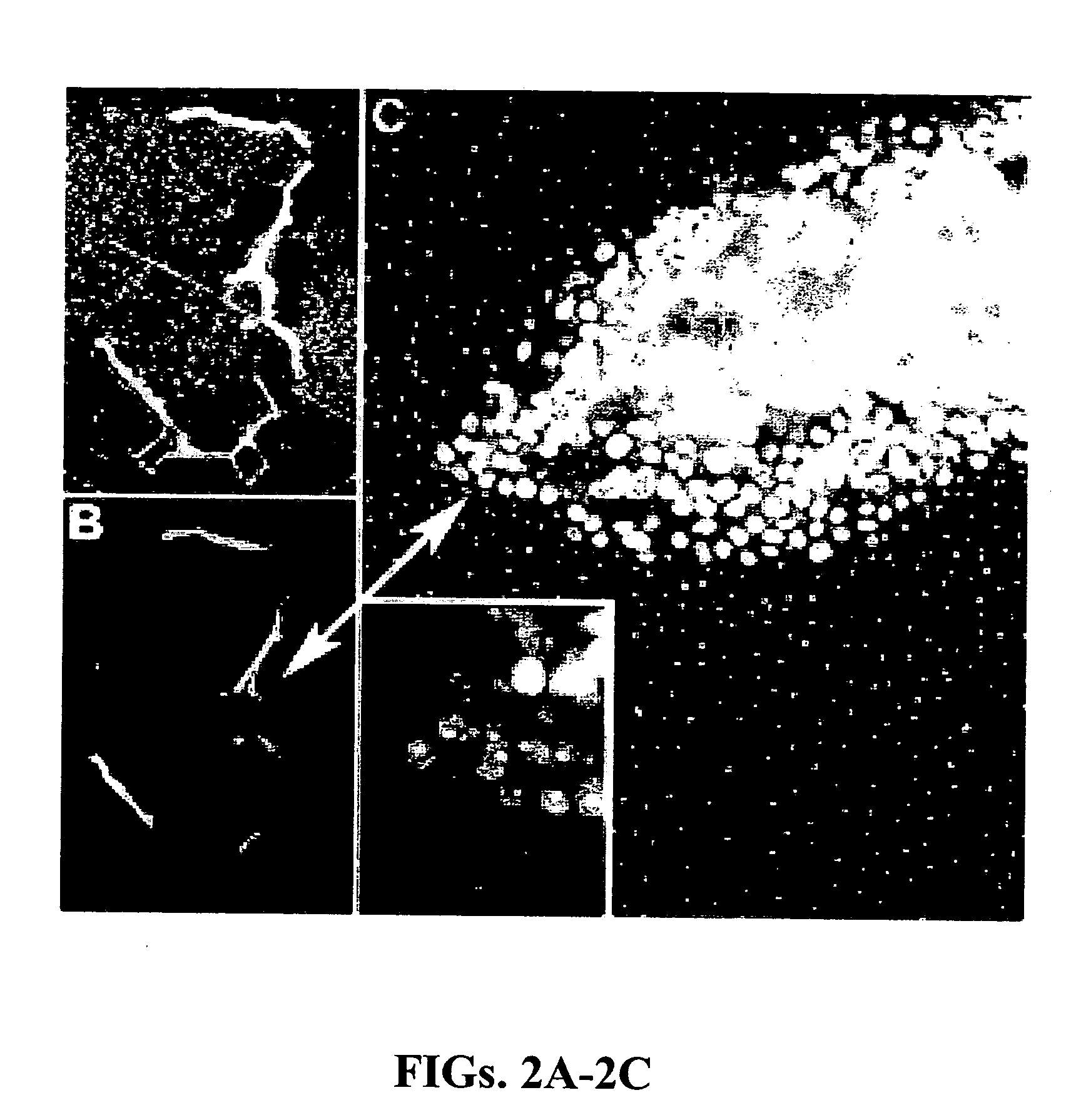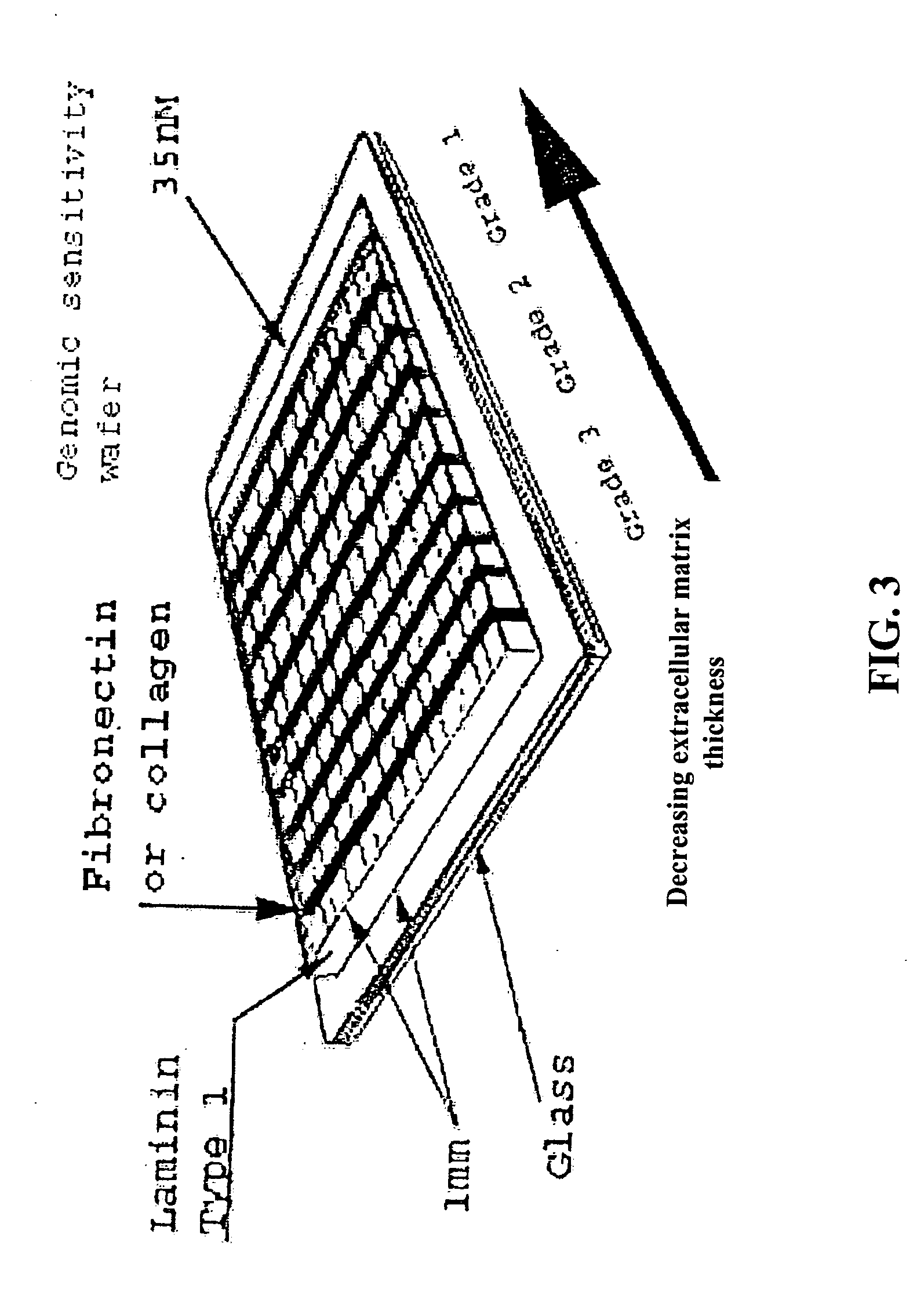Methods and compositions related to a matrix chip
a matrix chip and matrix technology, applied in the field of cell biology and cancer diagnosis, can solve the problems of limited use of cell morphology for cancer detection, unrecognized clinical use, and insufficient routine clinical use, and achieve the effect of realistic assessment of the efficacy of anti-cancer agents, modulating the phenotype of cells, and reducing the probability of metastasis
- Summary
- Abstract
- Description
- Claims
- Application Information
AI Technical Summary
Benefits of technology
Problems solved by technology
Method used
Image
Examples
example 1
Device Fabrication—Discrete Heights
[0090] A device suitable for the practice of this invention may consist of one or more regions or zones of material of defined composition and thickness that is deposited or formed upon or within a substrate. In certain embodiments, such devices include multiple regions or zones of material deposited or formed upon or within a substrate. Each region may have the same or different composition and / or thickness as one or more other regions of material on the same substrate. In some instances it is desirable for the region(s) to abut one another. In other instances it is desirable for the regions to be spaced apart or divided by a barrier.
[0091] An example of such a process includes, but is not limited to a mask created using SU-8 / 250 negative resist (Microlithography Chemical Co.) that can be prepared as follows. Suitably cleaned substrates are dehydrated at 200° C. for 1 hr and cooled to room temperature in a dry atmosphere. The substrate is then m...
example 2
Device Fabrication—Gradient
[0092] In some instances it is convenient or desirable that the thickness of the matrix protein within a zone vary in a continuous manner between some minimum and maximum values. This is most conveniently accomplished by forming the zones of matrix on the surface of the substrate in accordance with any of the damascene procedures described above, but modifying the procedure such that the substrate is supported at an angle relative to the horizontal that is calculated to result in the desired thickness gradient during the denaturation baking step of the process. Alternatively, the desired thickness gradient can be formed into the substrate by casting, molding, embossing, engraving, etch; or hot stamping prior to applying the matrix protein.
example 3
Determination of Cellular Invasiveness
[0093] A device consisting of two sets of two parallel lines of collagen matrix protein, each line being 10 microns by 100 microns in extent on 100 micron centers, was fabricated on a glass microscope coverslip by casting each line in an opening in a silicone rubber mask as described above. The thickness of the matrix material comprising each line was controlled by adjusting the amount of matrix protein solution dispensed into an opening in the mask. The two sets of parallel lines had matrix protein thicknesses of approximately 30 microns (thin matrix) and 200 microns (thick matrix), respectively, after annealing at 55° C. for one hour. After removal of the mask, the coverslip with inscribed lines of matrix protein was placed on the bottom of a plastic cell culture dish and covered with approximately 30 mL of DMEM cell culture medium supplemented with 10% fetal calf serum. A micropipette was used to seed one line in each set with non-invasive O...
PUM
| Property | Measurement | Unit |
|---|---|---|
| thickness | aaaaa | aaaaa |
| thickness | aaaaa | aaaaa |
| thickness | aaaaa | aaaaa |
Abstract
Description
Claims
Application Information
 Login to View More
Login to View More - R&D
- Intellectual Property
- Life Sciences
- Materials
- Tech Scout
- Unparalleled Data Quality
- Higher Quality Content
- 60% Fewer Hallucinations
Browse by: Latest US Patents, China's latest patents, Technical Efficacy Thesaurus, Application Domain, Technology Topic, Popular Technical Reports.
© 2025 PatSnap. All rights reserved.Legal|Privacy policy|Modern Slavery Act Transparency Statement|Sitemap|About US| Contact US: help@patsnap.com



